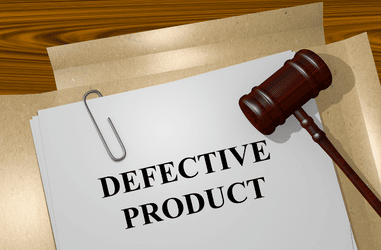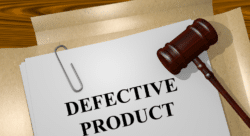Who Is Liable for a Defective Medical Device Injury

While medical devices have helped many people, if they are defective, they could cause harm. After sustaining an injury from a defective medical device, the injured party can seek compensation.
However, they must first determine who is liable for the defective medical device injury. Once the injured party determines liability, they could file a claim or lawsuit against the party who caused their injuries. There are several potential people or entities the injured party could hold liable, such as the device designer, manufacturer, distributor, or medical professional that used the device.
What Is a Medical Device?
A medical device can range from something as simple as a tongue depressor to something as complex as a pacemaker for the heart. The World Health Organization (WHO) defines them as any instrument, apparatus, implement, machine, appliance, implant, or other material intended for medical purposes.
For the medical community to consider something as a medical device, it must be the following:
- A device that can diagnose a patient’s condition, cure, mitigate, or treat their disease
- A device that operates to affect a body’s function, including the body’s structure
Examples of medical devices include insulin pumps, pacemakers, intrauterine devices (IUDs), breast implants, and hip replacements.
Potential Liable Parties for a Defective Medical Device Injury
When sustaining an injury because of a defective medical device, several parties could have acted negligently to cause those injuries. Typically, an attorney can hire experts to investigate the device to determine what caused it to malfunction.
Potential parties who hold liability after a defective medical device injury include:
- The designer
- The manufacturer
- The distributor
- The medical facility or provider
Once the injured party determines liability, they can file a claim or lawsuit against the person who caused their injuries and recover compensation to make themselves financially whole again.
The Designer
If the injuries occurred because of a defective design, the injured party could hold the designer liable. While it’s not common for defective designs to go through manufacturing, it still happens. Common reasons a medical device could have a defective design include the following:
- The designer rushed the process of designing the product.
- The designer didn’t ensure they created an effective device.
Regardless of why the device was defective, the injured party could file a claim against the designer if the faulty design caused their injuries.
The Manufacturer
During the manufacturing process, the manufacturer could have tried to save money by producing the product faster. Faster production means quality assurance could be lower, potentially manufacturing faulty products unknowingly.
Manufacturers could also try to save money by purchasing cheaper materials. However, cheaper materials might not hold up like something more durable. If defective manufacturing caused the injuries, the injured party could file a claim against the manufacturer.
The Distributor
Product distributors have the motivation to sell their products and make a profit. Because of this, they could insinuate their product does more than it actually does. If a medical professional uses a device thinking it has more capabilities, someone could suffer injuries while using it.
Another situation where the injured party could hold the distributor accountable is if they didn’t store or ship the product safely. Faulty storage or shipping could cause damage to the products. If this happens, the injured party could hold the distributor accountable by filing a claim or lawsuit against them.
The Medical Provider
If a medical care provider misuses a device or makes false claims to a patient about the device’s abilities, the injured party could hold them accountable. In addition, they could file a claim or lawsuit against the medical professional or medical facility they work at, depending on the circumstances.
The Injured Party Could Recover Damages From the Liable Party
If the injured party can prove the liable party caused their injuries, they could file a claim or lawsuit against them to recover damages. Two types of damages they could recover include economic and non-economic damages. Economic damages refer to the monetary losses they incurred, and non-economic damages refer to the non-monetary losses they sustain.
Examples of economic damages someone could recover after sustaining an injury from a defective medical device include:
- Medical bills: Money the injured party had to pay to cover their medical bills for injury-related treatments. The injured party could also include the projected costs of future medical bills in their claim or lawsuit.
- Lost income: Income the injured party didn’t receive because they had to miss work while treating or recovering from their injuries. Injury victims could also include the costs of future lost income if they miss work in the future because of their injuries.
Examples of non-economic damages injury victims could recover include:
- Pain and suffering: The physical pain the injury victim endured because of their injuries. Injury victims can also include the discomfort or anguish they experienced in pain and suffering damages.
- Emotional distress: The emotional issues the injury victim dealt with because of their injuries. Injury victims could pursue these damages in their claim if they experienced negative psychological issues, such as anxiety or sleeping issues.
Since non-economic damages aren’t associated with a monetary loss, it is helpful to have an medical device injury attorney calculate their value.
An Attorney Can Help Identify the Liable Party in a Medical Device Injury Case
If you’re struggling to determine who is liable for your defective medical device injury, an attorney can help. Attorneys have the investigative experience to look into the case to identify the liable party. Fill out the contact form, and a mass torts attorney from our network can contact you soon for a free consultation. During the consultation, they can provide information about how they can help you through your case, as well as your legal options, so you’re fully informed about the steps you can take.


